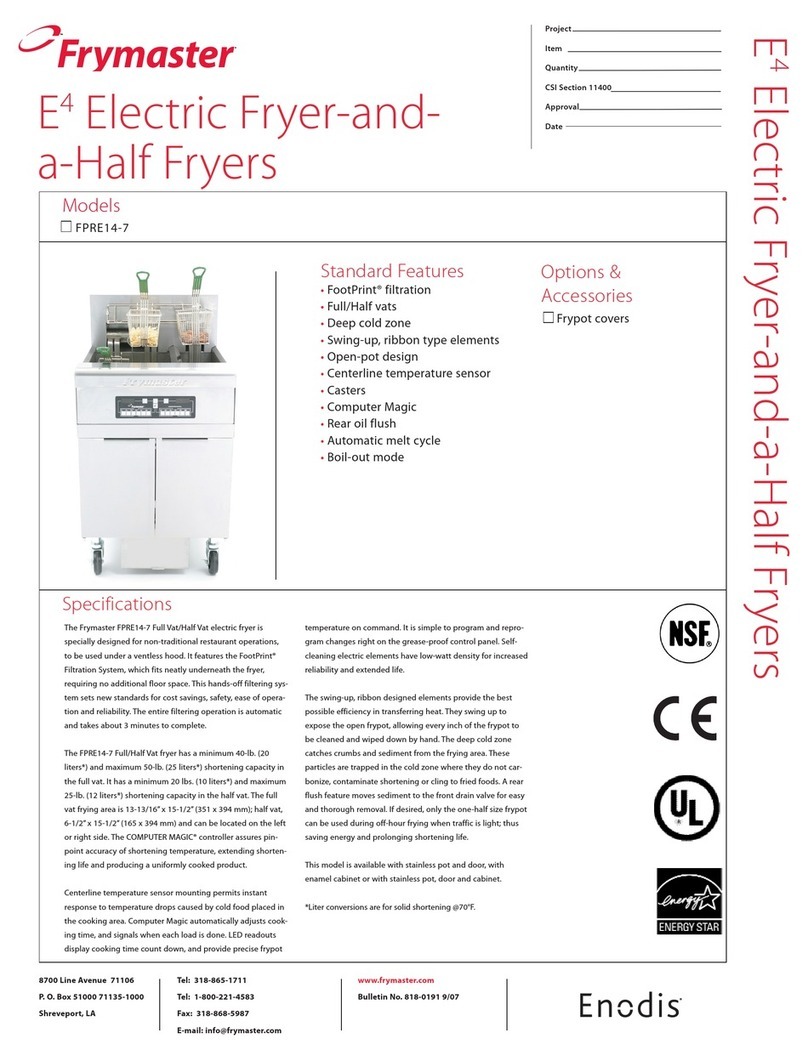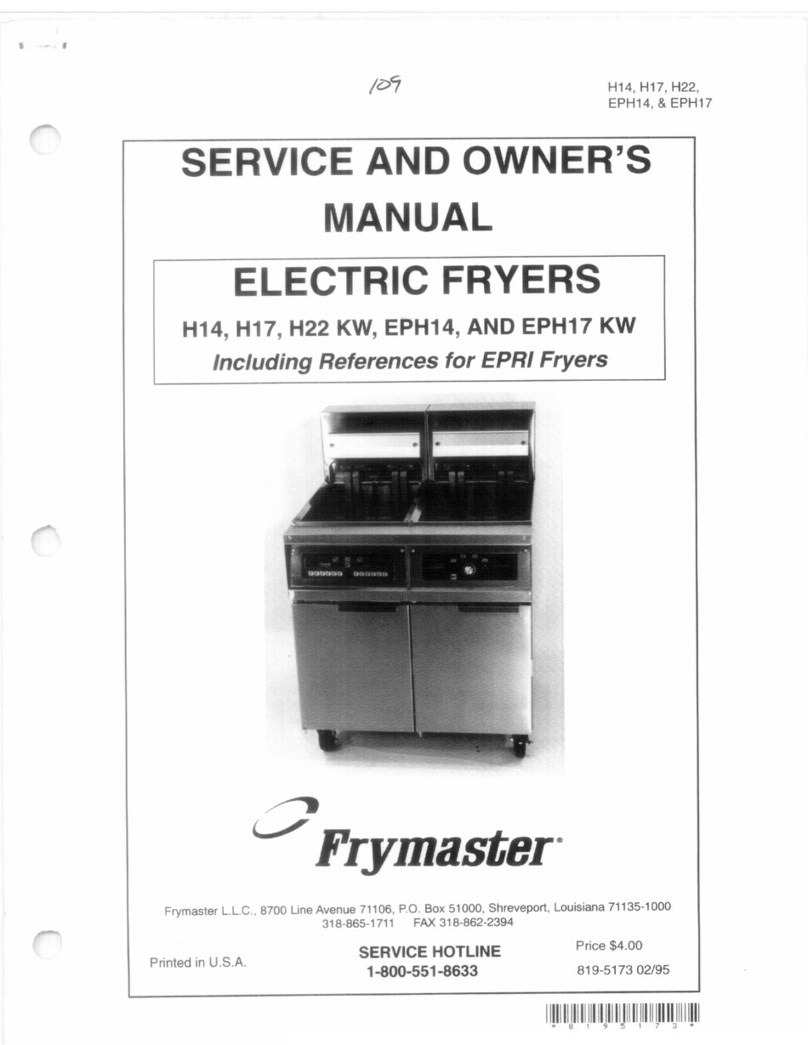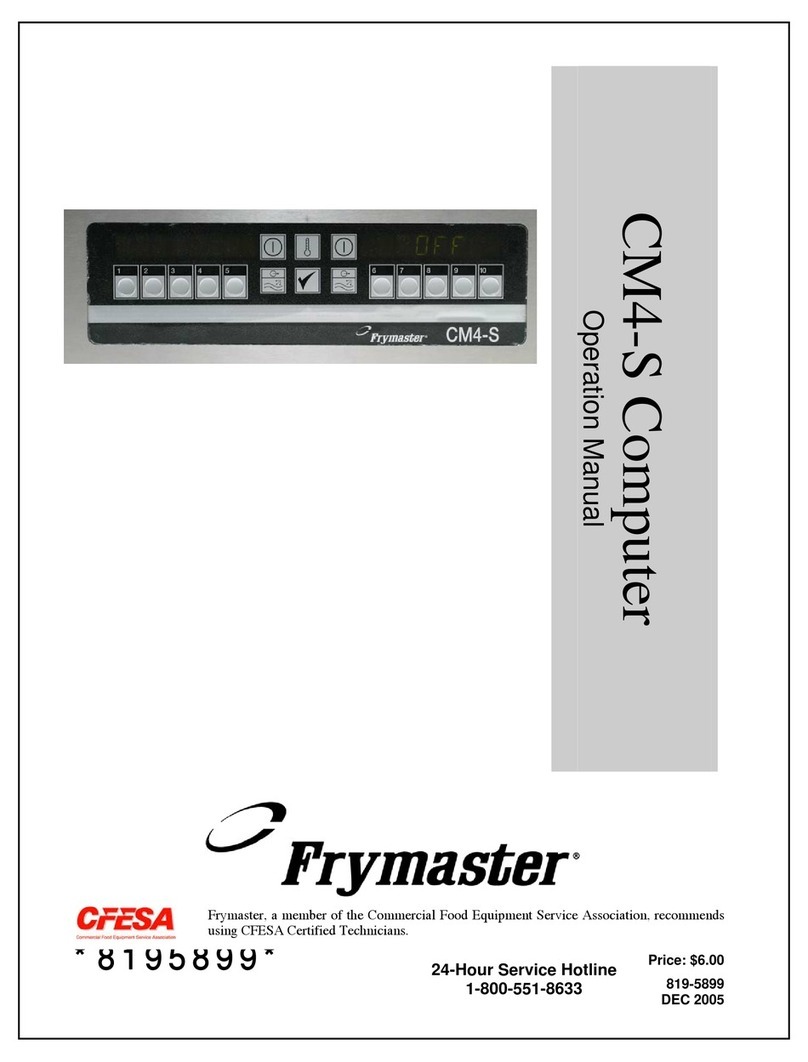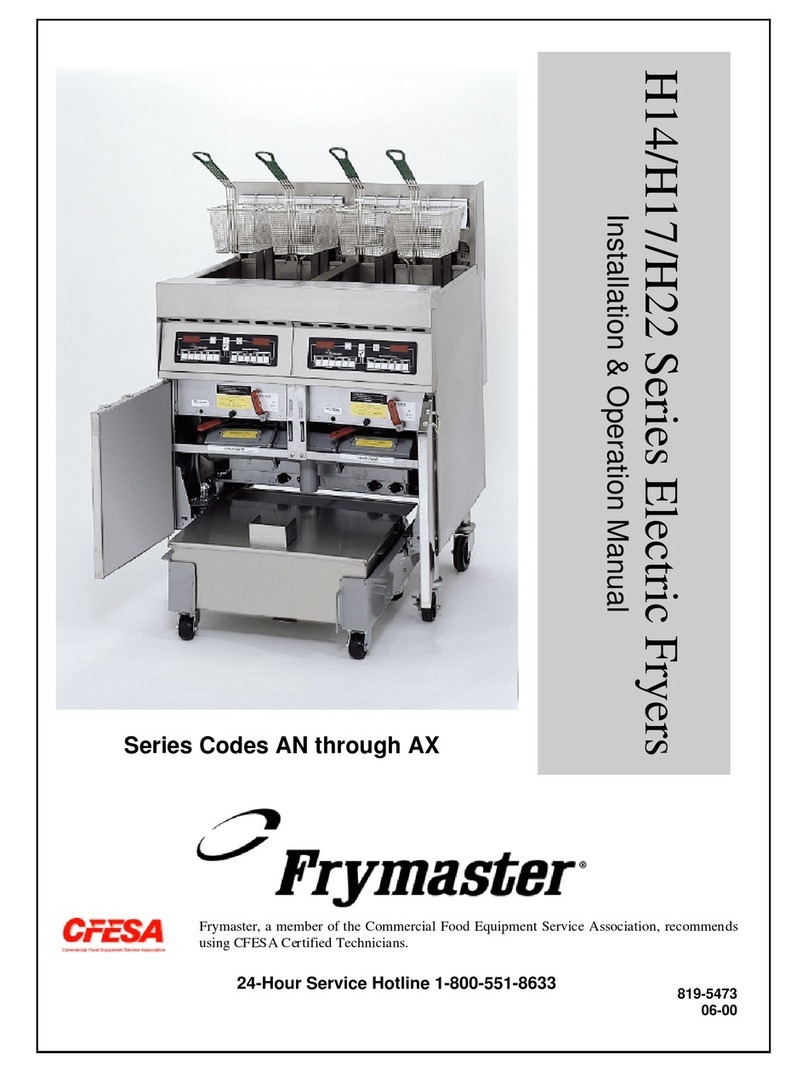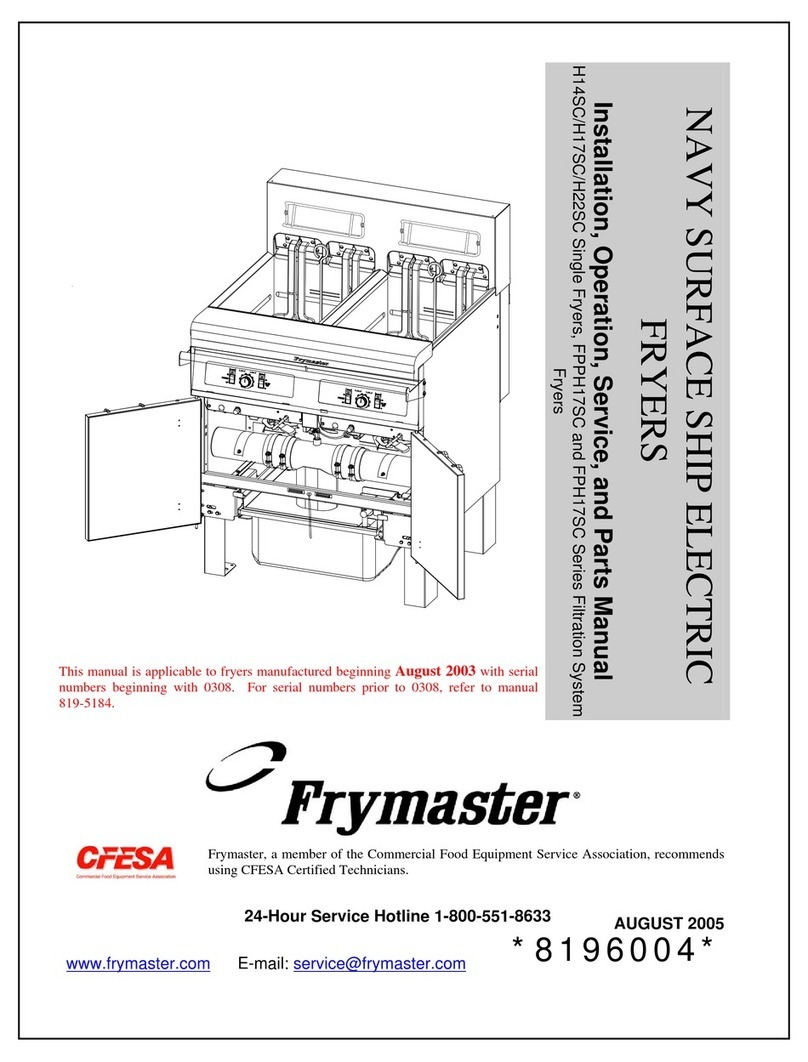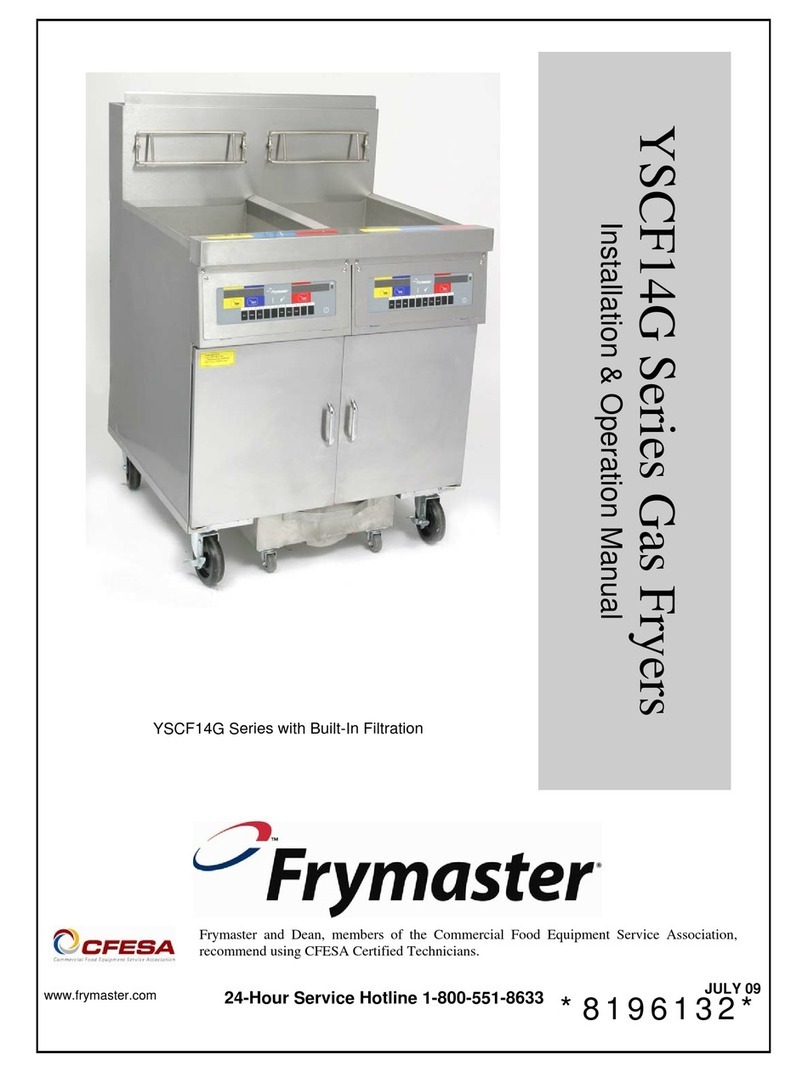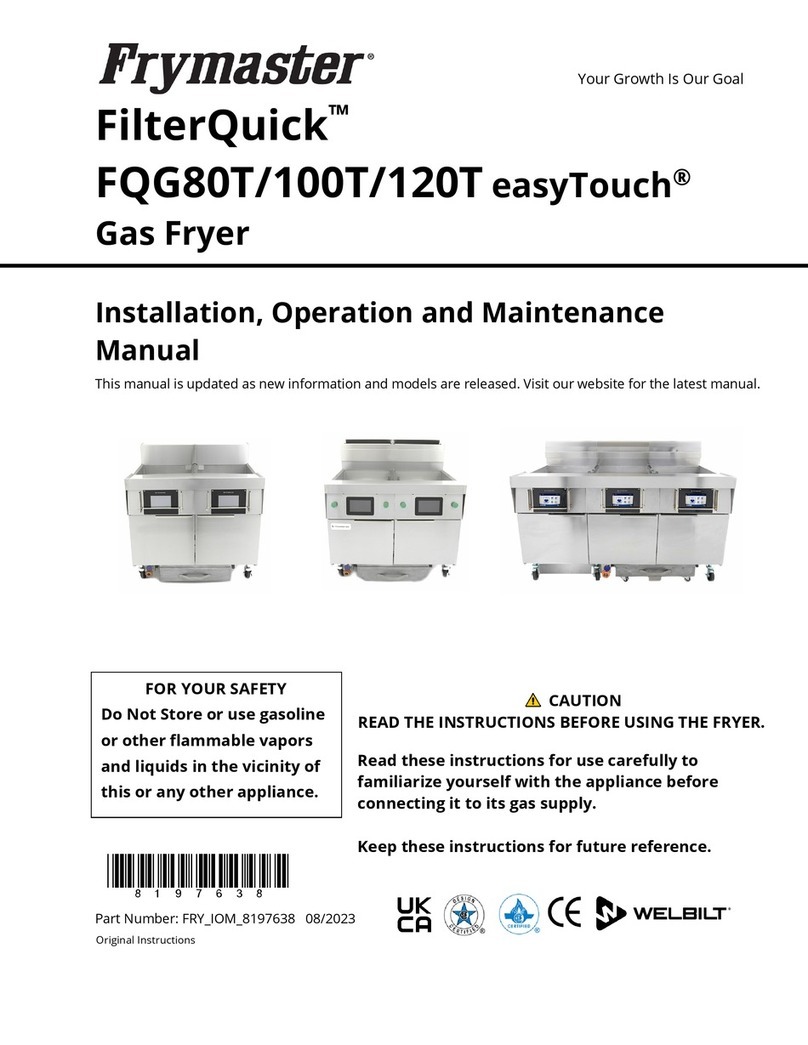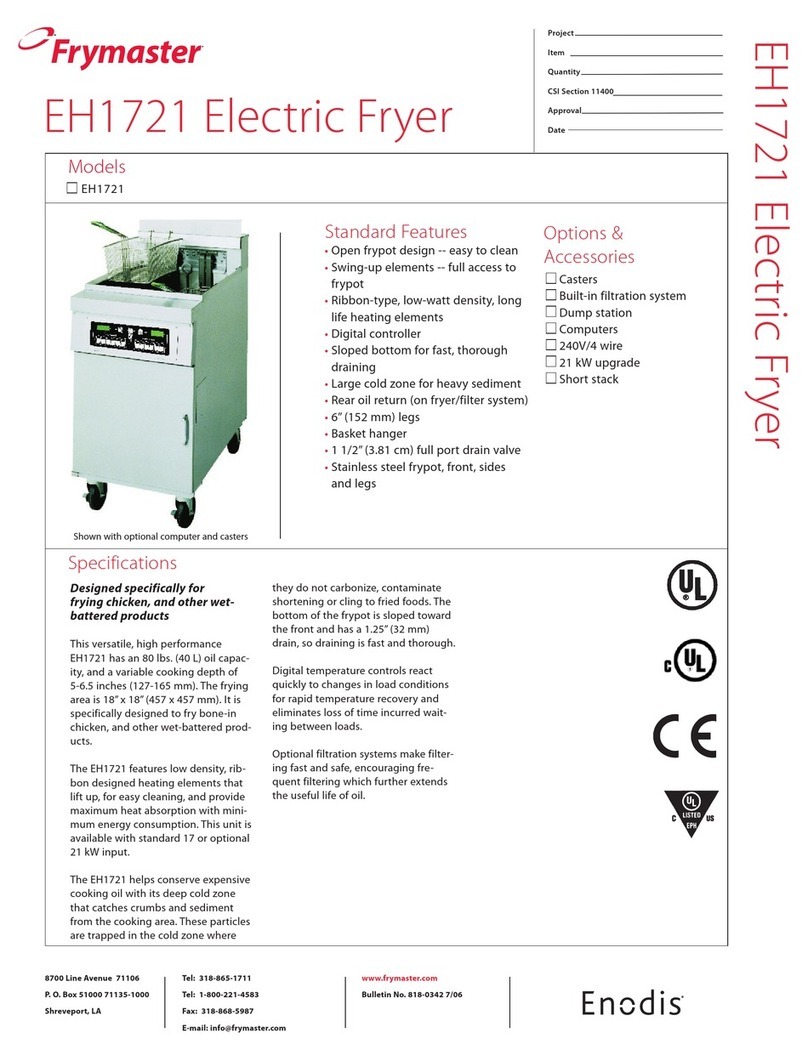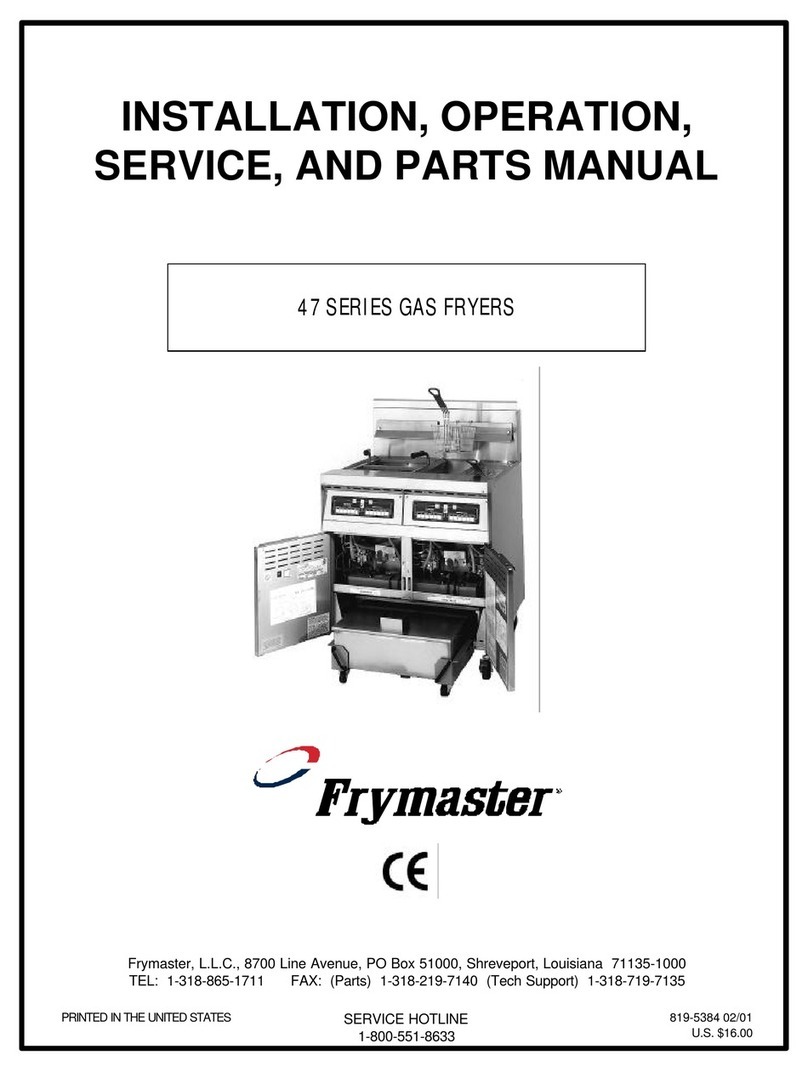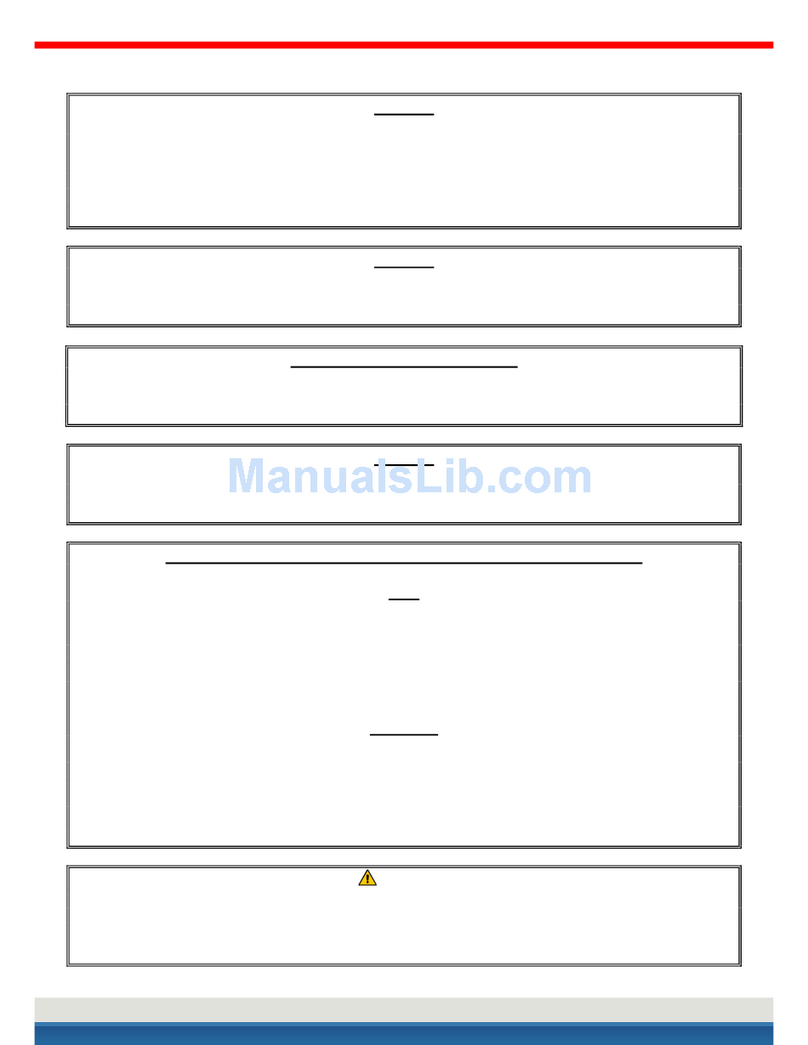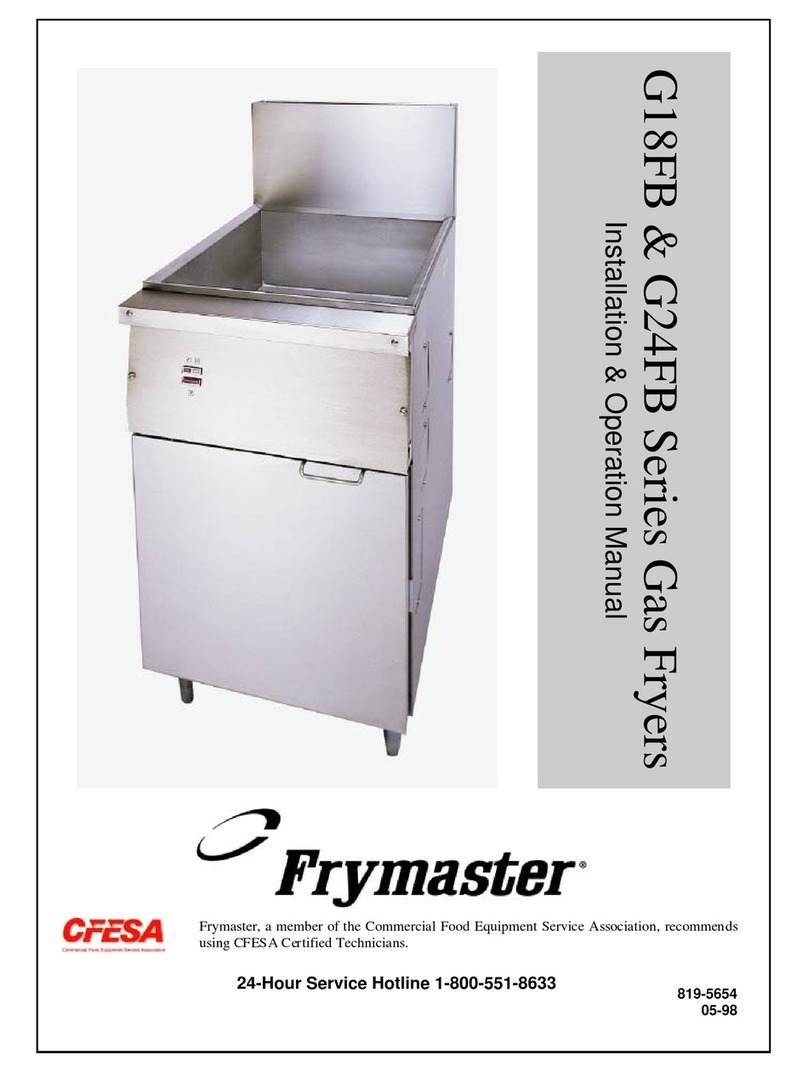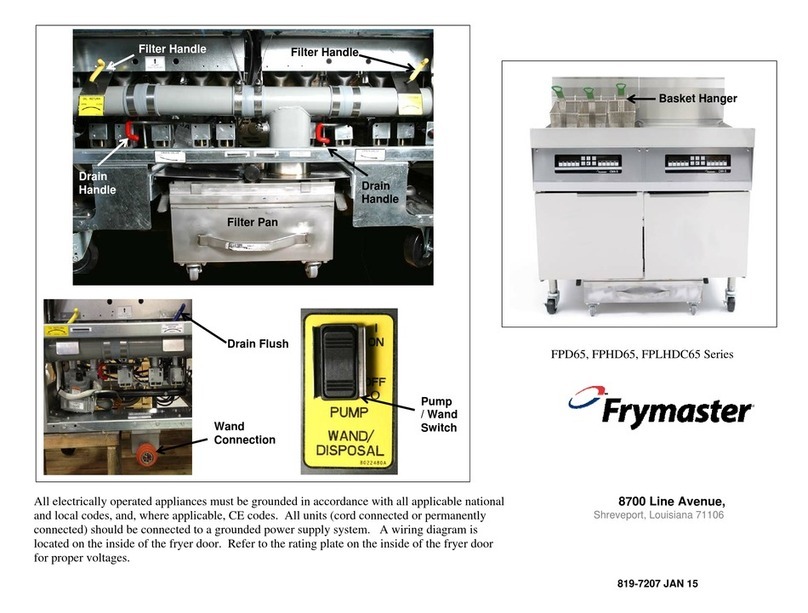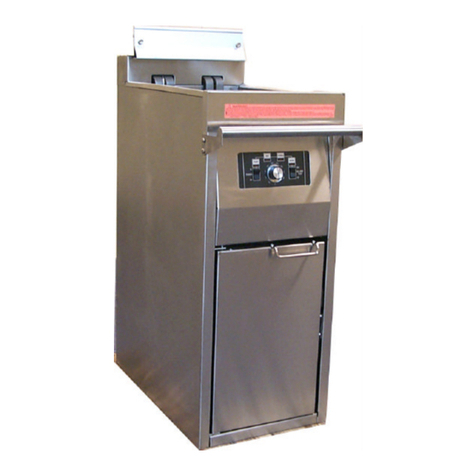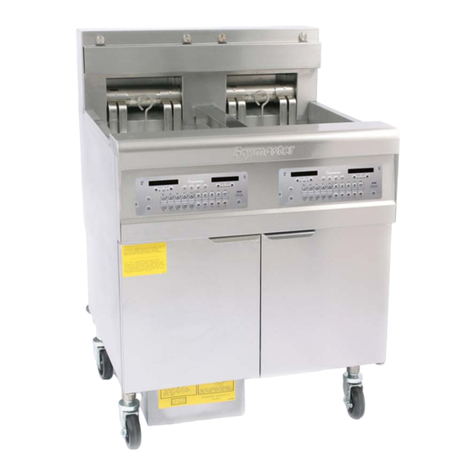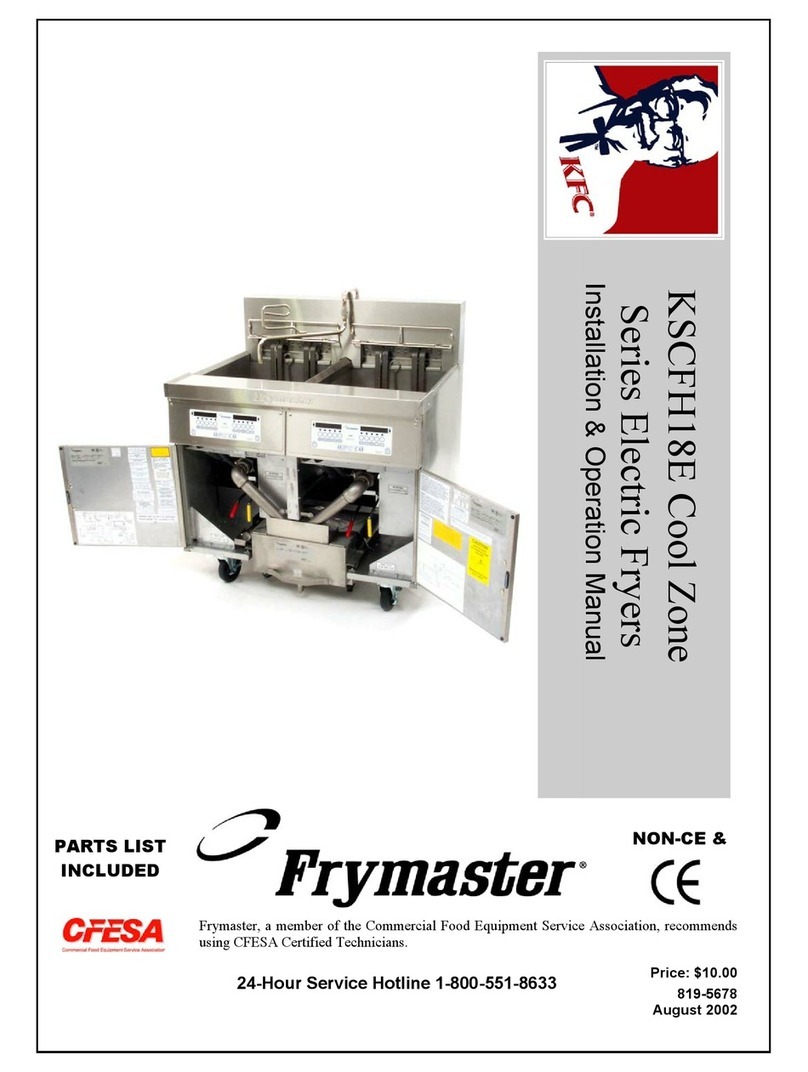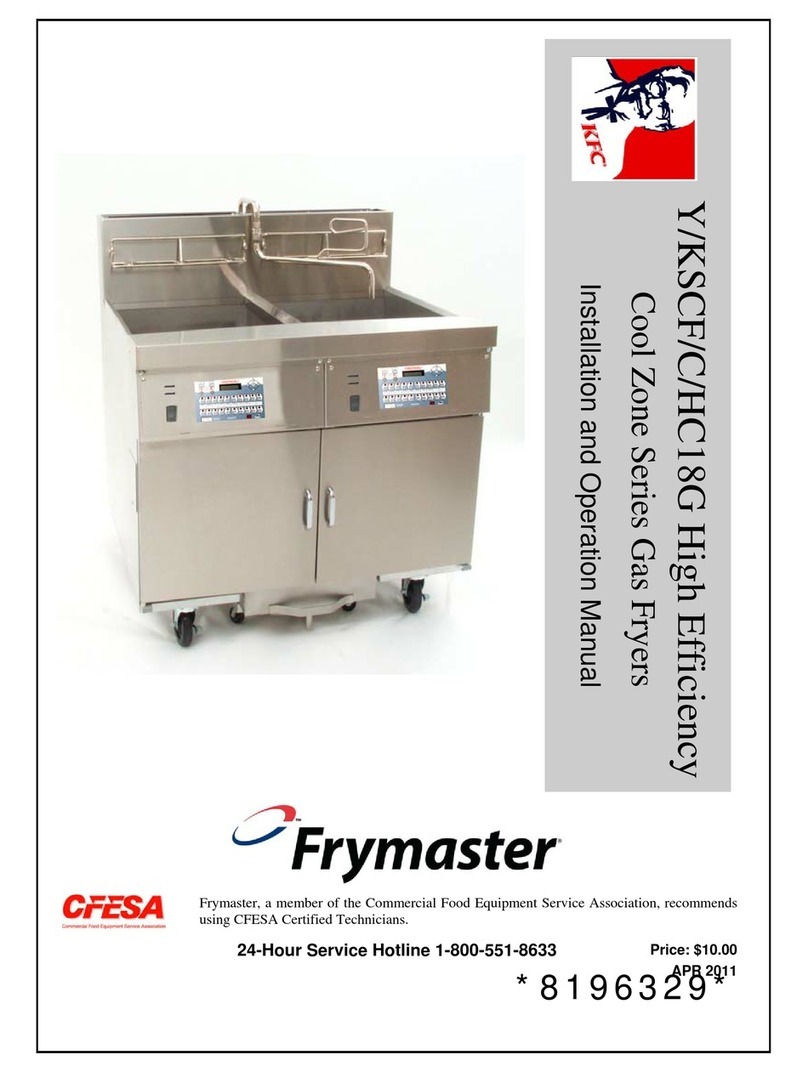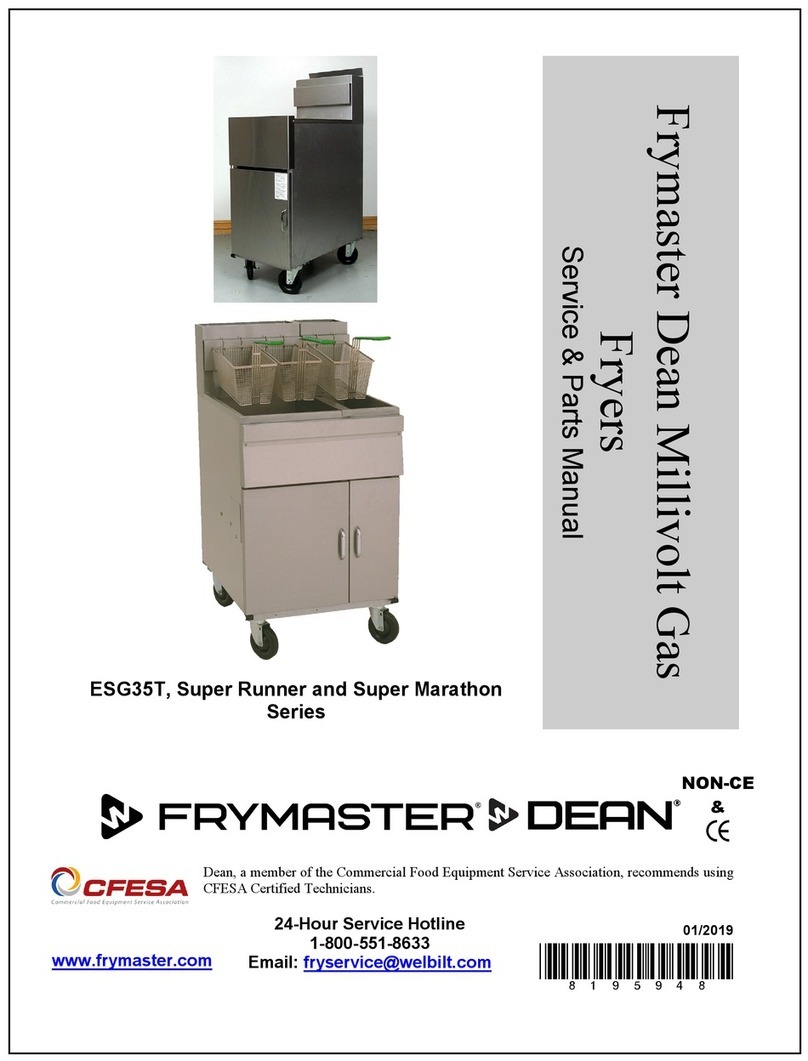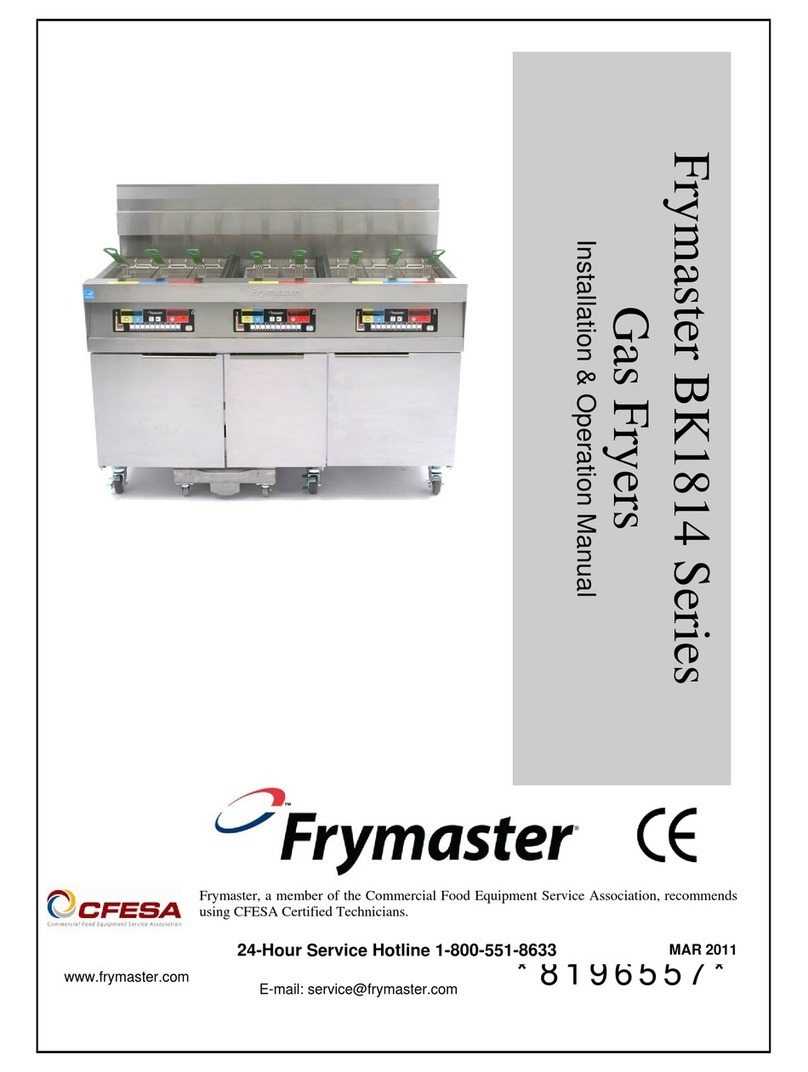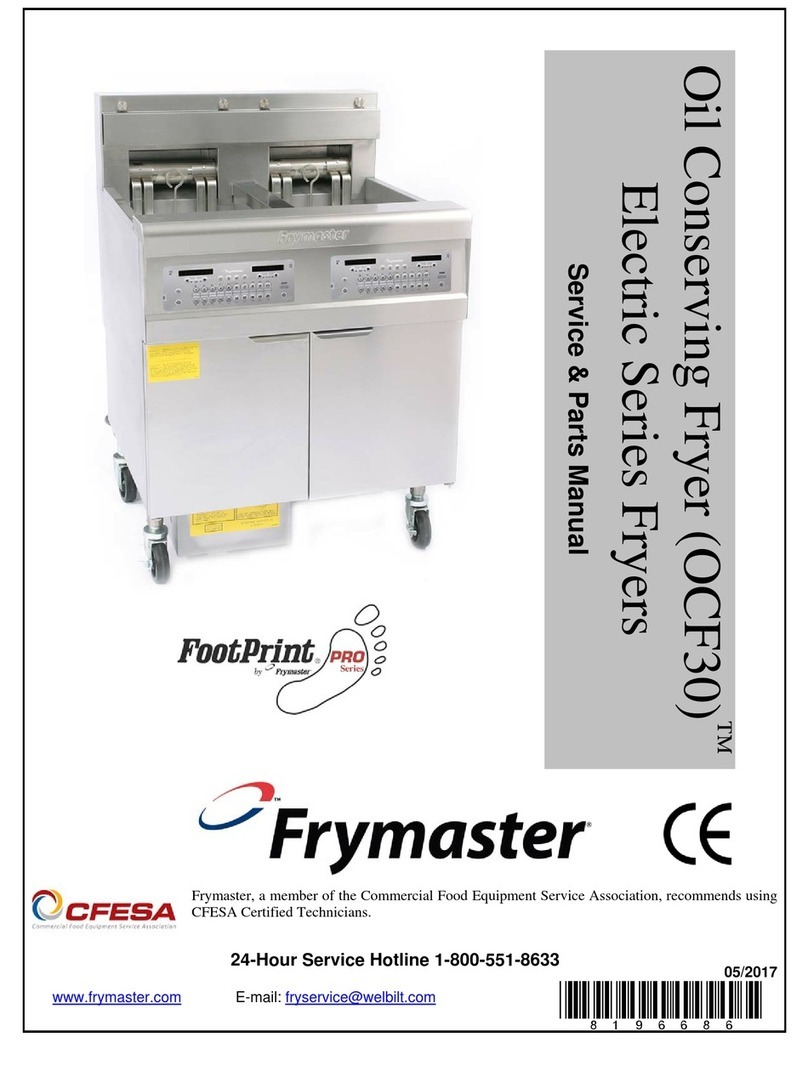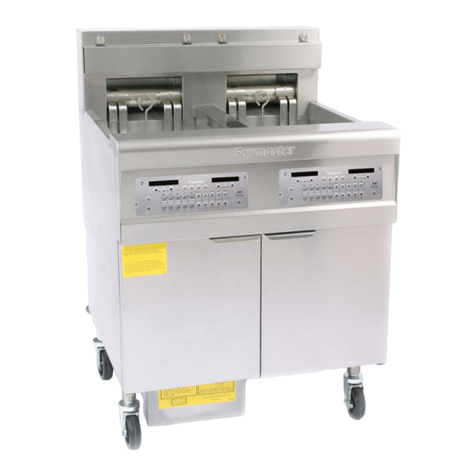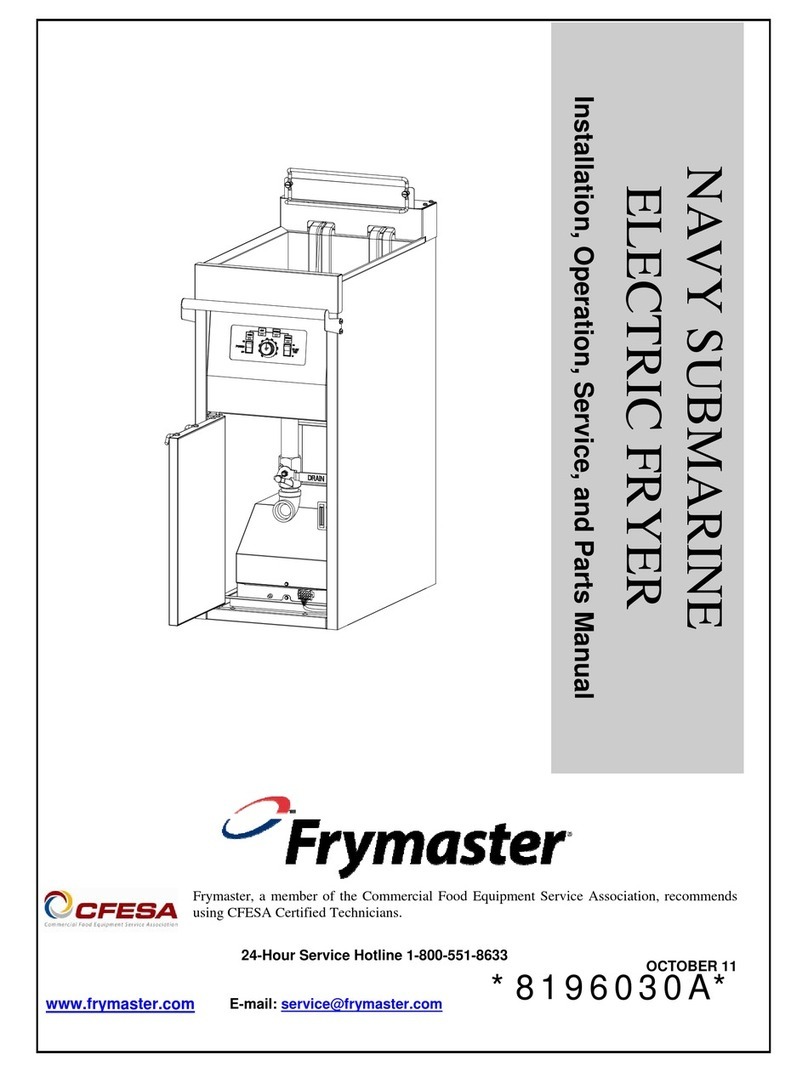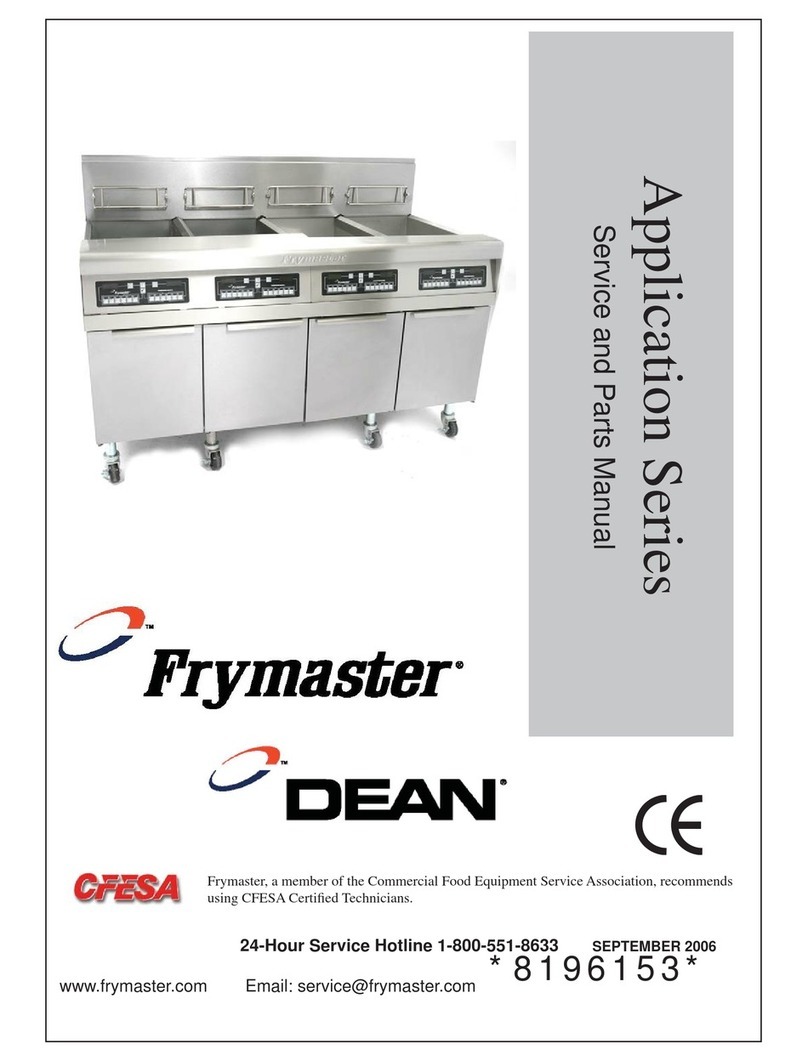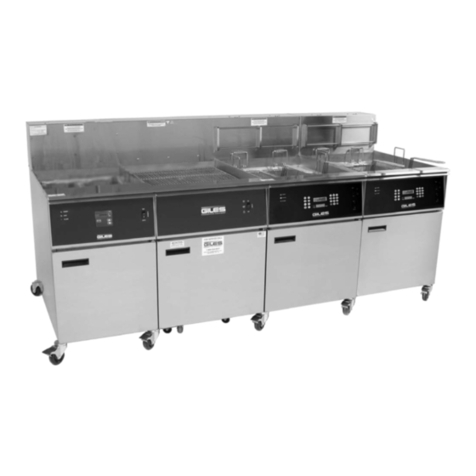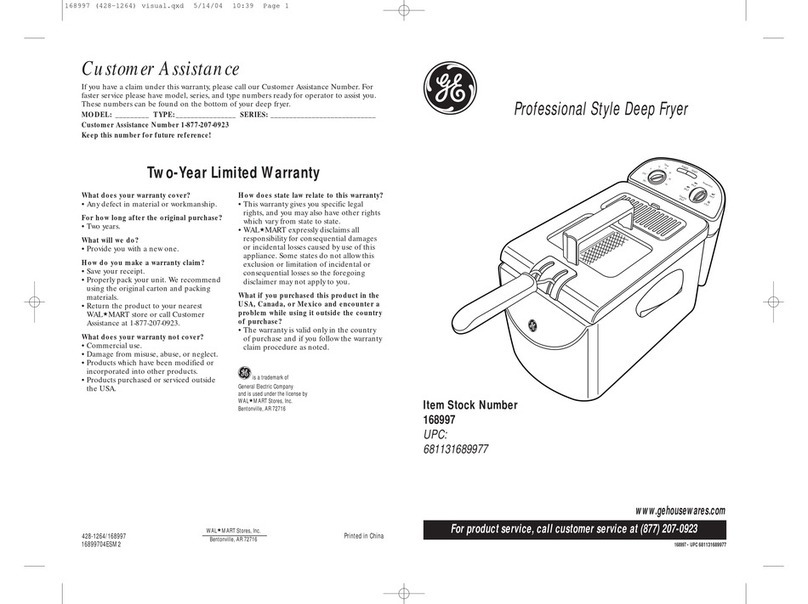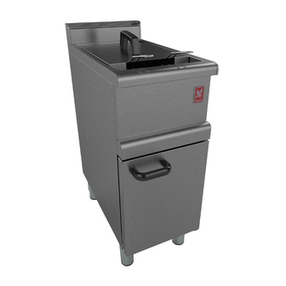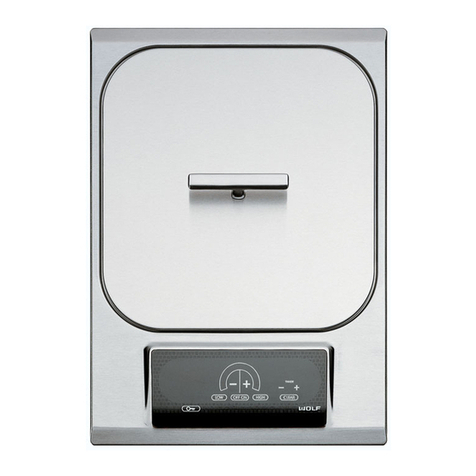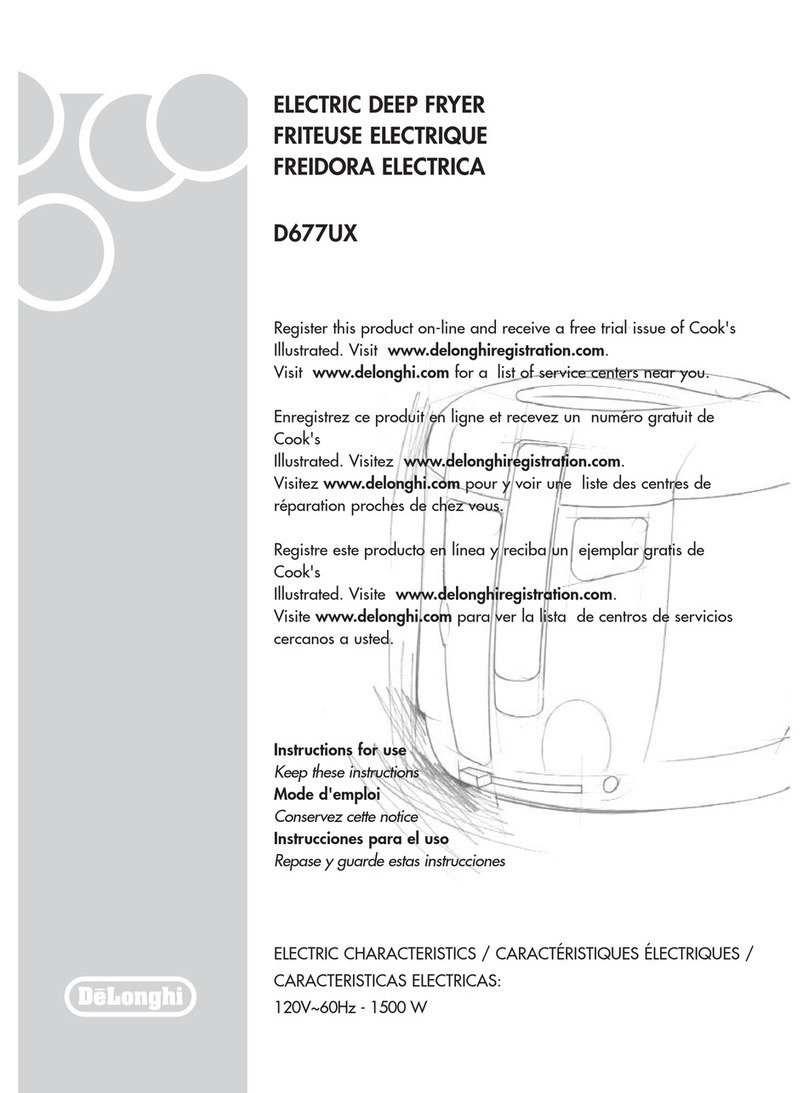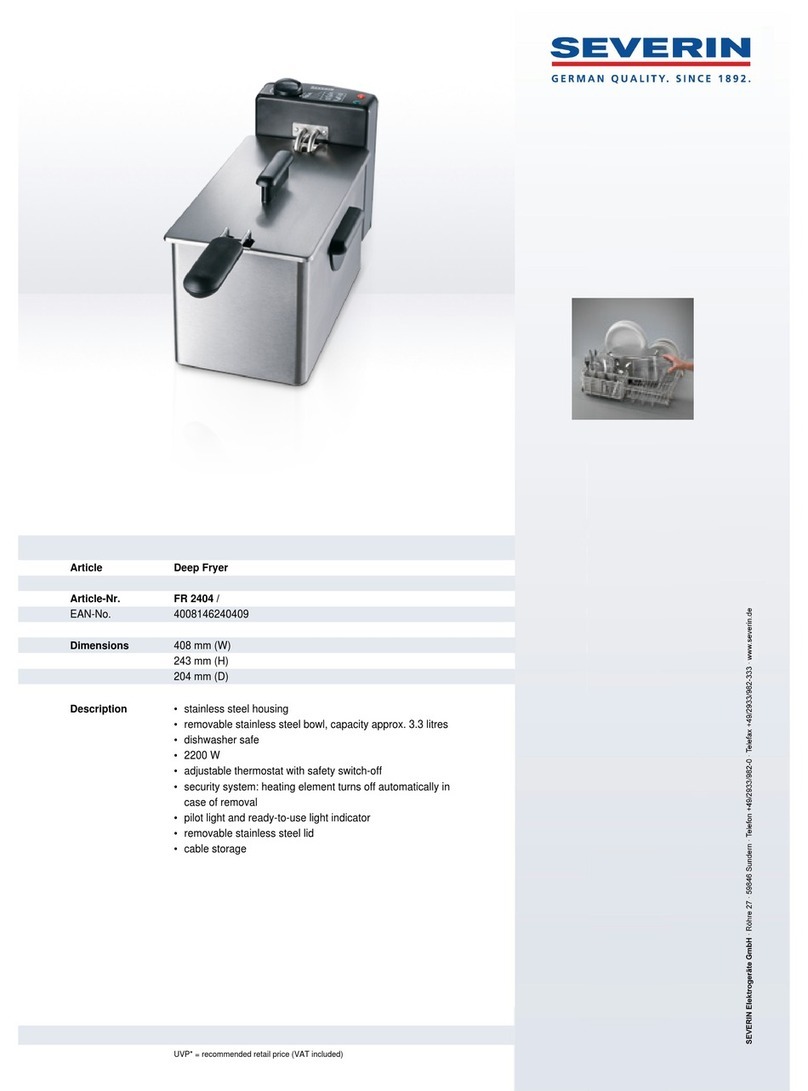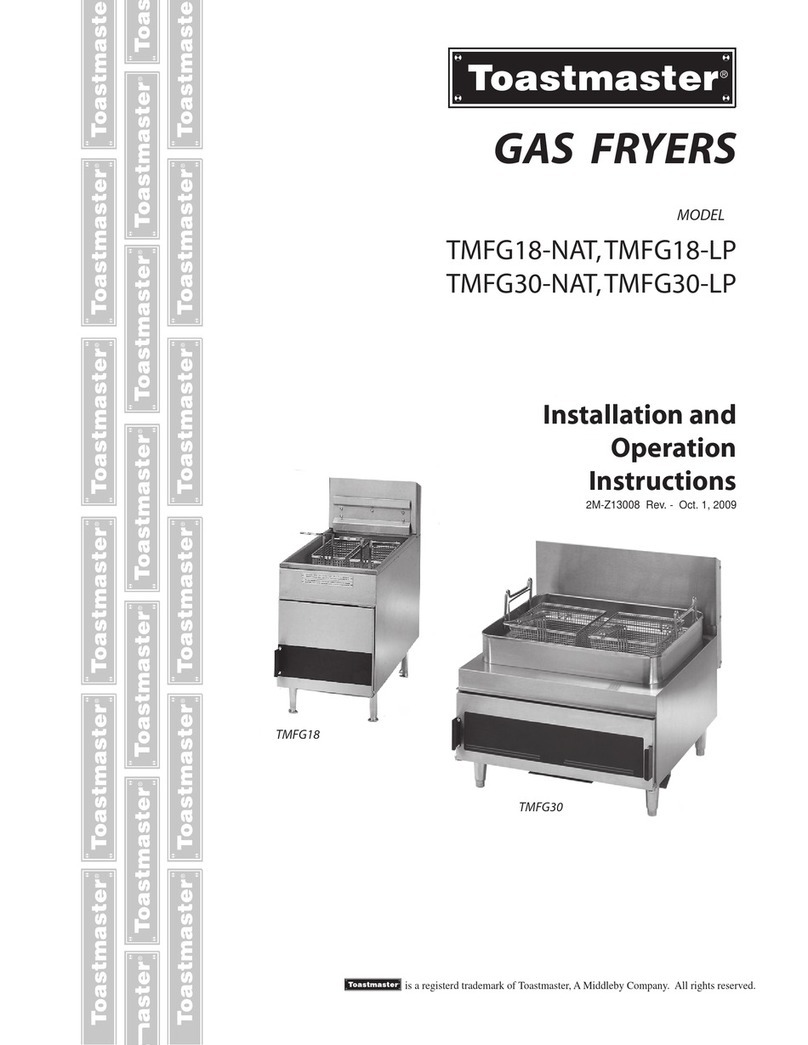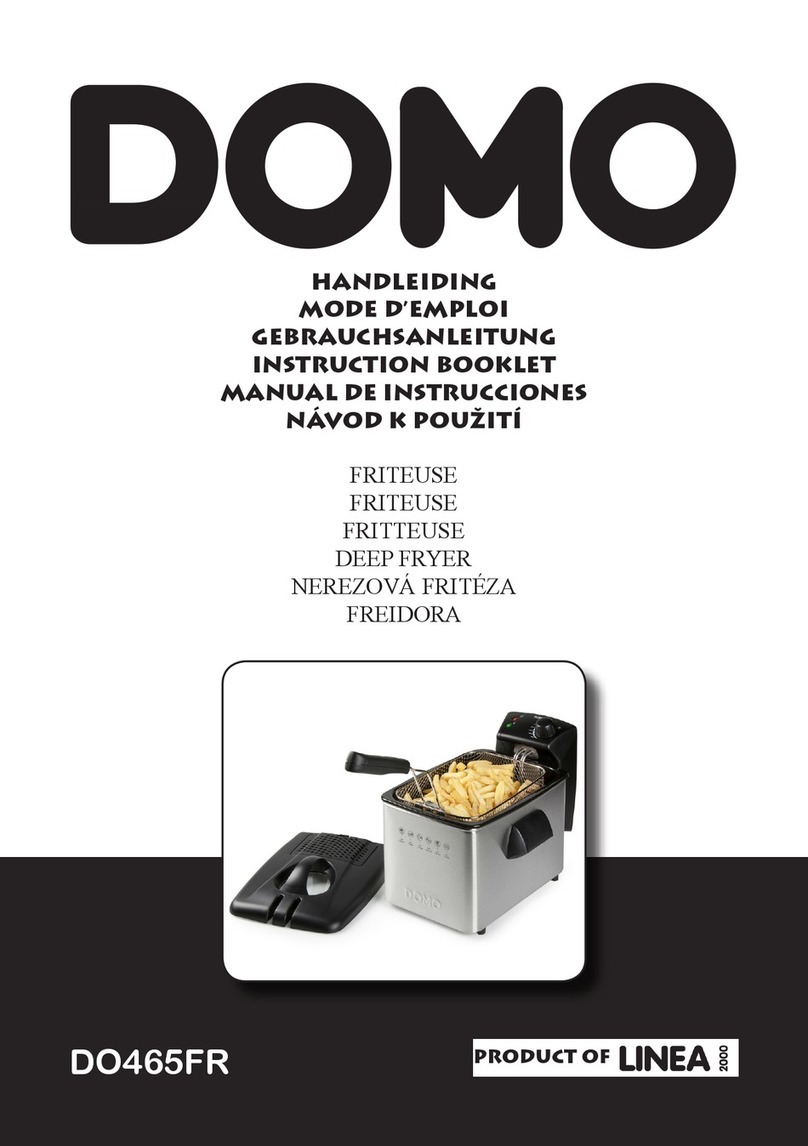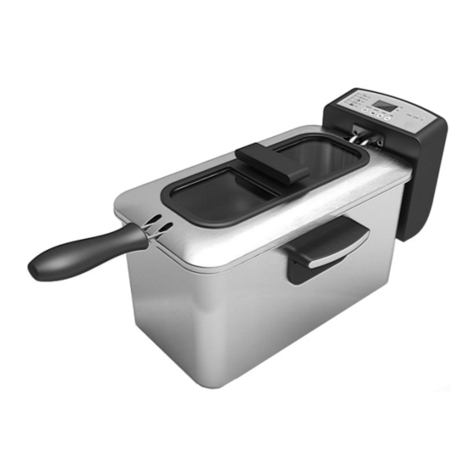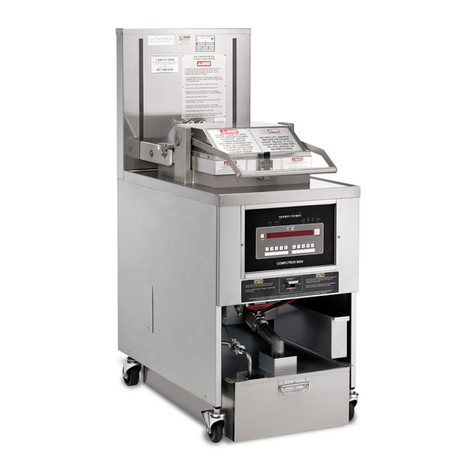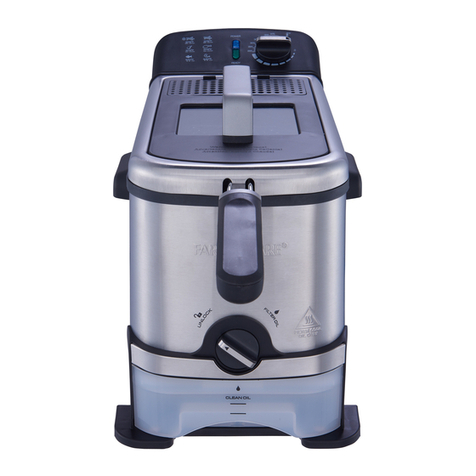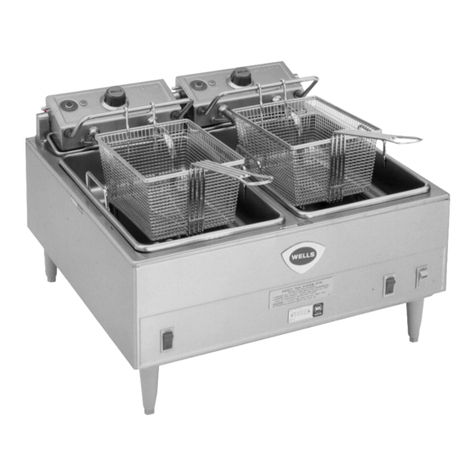
v
3.4.2 Routine Oil Changes...............................................................................................3-6
3.4.2.1 Routine Oil Changes (JIB only)................................................................3-6
3.4.2.2 Routine Oil Changes (Saddle Oil Reservoir only) .................................3-7
3.4.3 Bulk Oil Systems................................................................................................................3-7
CHAPTER 4: Filtration Instructions
4.1 Introduction.........................................................................................................................4-1
4.2 Preparation for Use with Filter Paper or Filter Pad ........................................................4-1
CHAPTER 5: Preventive Maintenance
5.1 Cleaning the Fryer ..............................................................................................................5-1
5.2 Daily Checks and Service ...................................................................................................5-1
5.2.1 Inspect Fryer for Damage.......................................................................................5-1
5.2.2 Clean Fryer Cabinet Inside and Out ......................................................................5-1
5.2.3 Clean the FilterQuick™Filtration System...............................................................5-1
5.2.4 Clean Filter Pan, Detachable Parts and Accessories ...........................................5-2
5.2.5 Clean Oil Level Float Switch....................................................................................5-2
5.2.6 Clean around AIF and ATO sensors.......................................................................5-2
5.2.7 Clean Basket Lift Rods ............................................................................................5-2
5.3 Weekly Checks and Service ...............................................................................................5-3
5.3.1 Clean Behind Fryers ................................................................................................5-3
5.4 Monthly Checks and Service..............................................................................................5-3
5.4.1 Drain and Clean Frypot...........................................................................................5-3
5.4.2 Deep Cleaning (Boiling Out/Cold Clean) the Frypot ............................................5-3
5.4.3 Check FilterQuick™Controller Setpoint Accuracy ................................................5-4
5.4.4 Pre-filter Maintenance ............................................................................................5-5
5.5 Bi-Monthly Checks and Service .........................................................................................5-5
5.5.1 Cleaning the Oil Saddle Reservoir .........................................................................5-5
5.6 Quarterly Checks and Service ...........................................................................................5-5
5.6.1 Replace O-rings........................................................................................................5-5
5.7 Semi-Annual Checks and Service......................................................................................5-6
5.7.1 Clean Gas Valve Vent Tube.....................................................................................5-6
5.7.2 Check Burner Manifold Pressure ..........................................................................5-6
5.8 Annual/Periodic System Inspection..................................................................................5-6
5.8.1 Fryer..........................................................................................................................5-6
5.8.2 Built-In Filtration System ........................................................................................5-7
5.8.3 Stainless Steel Care .................................................................................................5-8
CHAPTER 6: Operator Troubleshooting
6.1 Introduction.........................................................................................................................6-1
6.2 Troubleshooting Fryers......................................................................................................6-2
6.2.1 FQ4000 and Heating Problems..............................................................................6-2
6.2.2 Error Message and Display Problems...................................................................6-3
6.2.3 Basket Lift Problems ...............................................................................................6-4
6.2.4 Filtration Problems..................................................................................................6-4
6.2.4.1 Incomplete Filtration...............................................................................6-5
6.2.4.2 Clogged Drain Error.................................................................................6-6
6.2.4.3 Filter Busy .................................................................................................6-6
